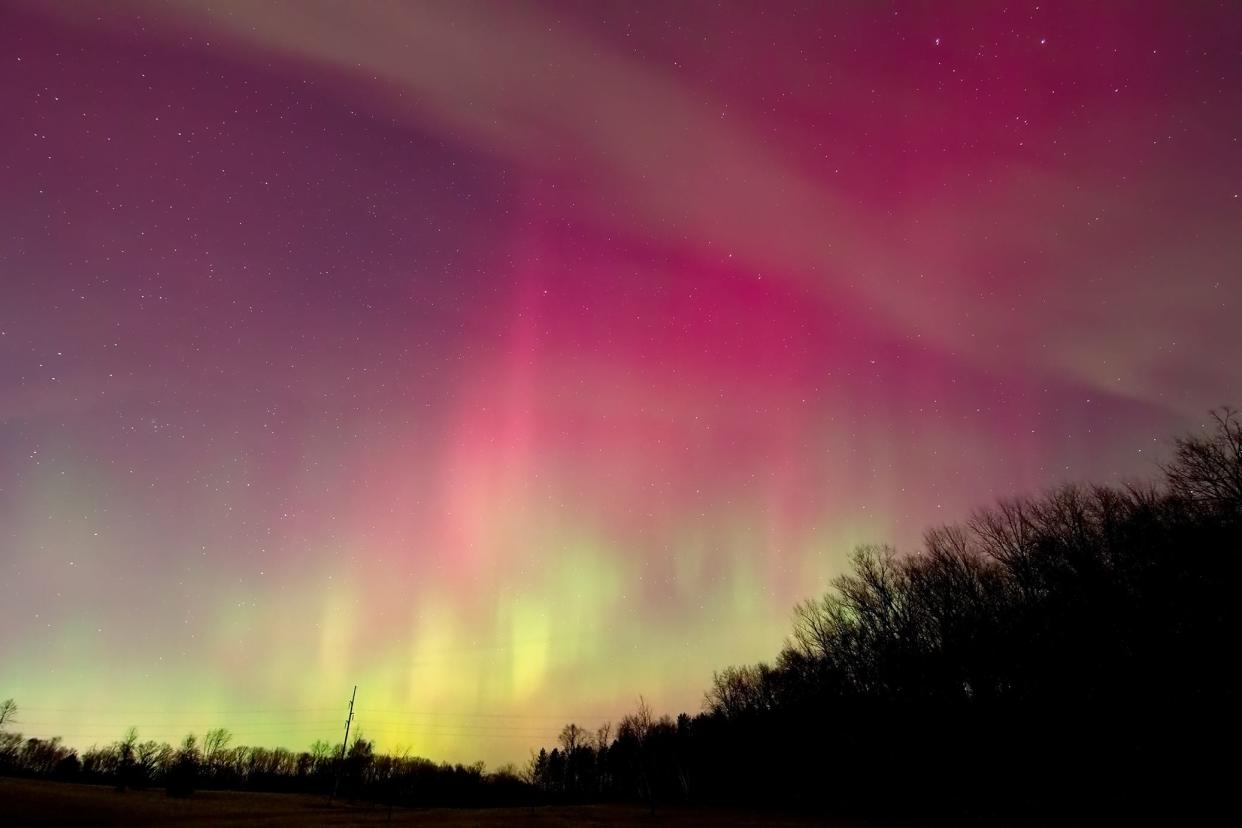You might be able to see the Northern Lights this weekend in Wisconsin

The Northern Lights could make an appearance in Wisconsin skies on Friday night, May 10, or early on May 11 after a large cloud of plasma erupted into space, according to the NOAA Space Weather Prediction Center.
Particles from a coronal mass ejection will arrive at Earth this weekend, causing a geomagnetic storm. Here's what to know if you're trying to catch a glimpse of the lights this weekend:
When could I see the Northern Lights in Wisconsin?
On May 10 or early May 11, Wisconsinites could potentially see the northern lights, also known as aurora borealis.
If you're in Milwaukee, your viewing of the sky could be obstructed by showers and possible thunderstorms on Friday evening, according to the National Weather Service.
Your best shot at seeing the northern lights on Friday in the Milwaukee area will be after midnight when the skies start to clear up, said Sarah Marquardt, local meteorologist for the NWS.
Skies will will be partly cloudy on Saturday night in the Milwaukee area, said Marquardt.
To monitor the aurora forecast, you can use the NOAA aurora forecast tool, which has a 30-minute forecast window. There's also a tool on the Milwaukee Astronomical Society website at www.milwaukeeastro.org.
On the tool, you'll see the Northern Lights prediction for 35 minutes ahead. You'll have good odds of seeing the Northern Lights if the color over Wisconsin is yellow, orange or even red.
Where else will the Northern Lights be visible?
This aurora may become visible over much of the northern half of the country, and maybe even travel as far south as Alabama to northern California, according to NOAA.
Here are some tips on how to see the Northern Lights:
Here are some viewing tips from Gene Hanson, observatory director for the Milwaukee Astronomical Society:
Head North: The Northern Lights get their name for a reason. Hanson says that the aurora is bigger and more vibrant the farther north you go. “Even 60 miles north can make a tremendous difference,” Hanson says.
Look for the horizon: The northern horizon, that is. Hanson says that you want the most unobstructed view to the north that you can find. Again, they’re called the northern lights for a reason. The more north you can see, the more of the lights you could see.
Move away from the light: Light pollution is often the reason you can’t see stars when you’re in the city. So, get out and away from the city. Rural areas are best, and Hanson says that anywhere you can see the stars well will work, but the darker the better.
Where to view the night sky in Wisconsin:
Here's a list of places in Wisconsin that could offer some of the best views of the night sky:
Newport State Park, Ellison Bay
RELATED: For the best Northern Lights viewing in Wisconsin, try these places
RELATED: Biggest astronomical events in 2024: Eclipses to meteor showers and full moon schedule
Drew Dawson contributed this report.
This article originally appeared on Milwaukee Journal Sentinel: Northern Lights may be visible in Wisconsin May 10-11, 2024
